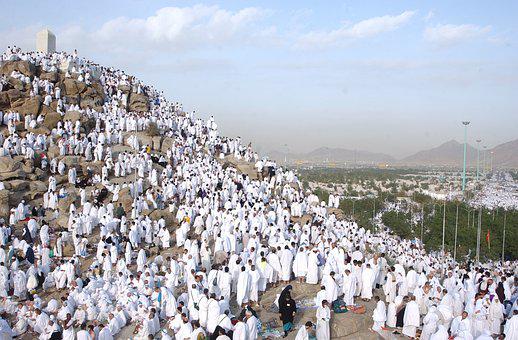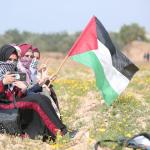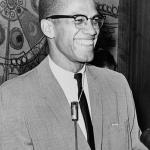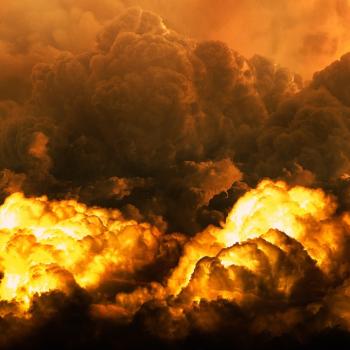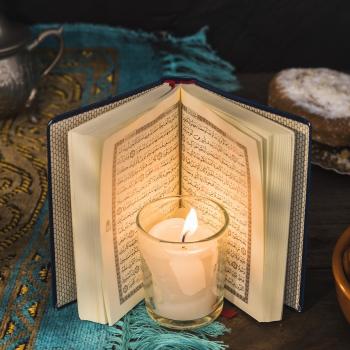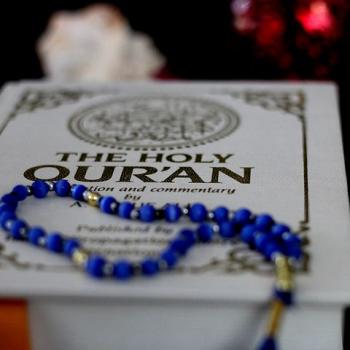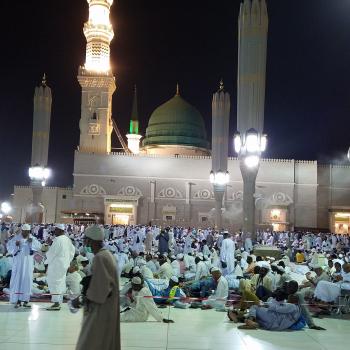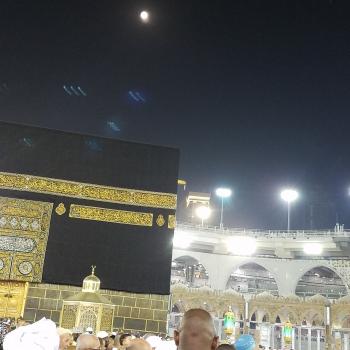Muslim pilgrims around the world gathered today at Arafat, near Mecca on the Day of Arafah. At the time of my writing, many of them are moving on to the next stop at Muzdalifah. This year’s official Hajj date is July 9. This very special day brings back so many great memories from my own, most memorable journey from five years ago. In the end, I will also share the lessons beyond the rituals of Hajj.
Muslim pilgrims from around the world gathered in a desert city called Arafat near Mecca. This is the beginning of the 5-day period on Hajj that starts in the plains of Arafat, leading to Muzdalifah the next night, where they will spend the night under the sky, then onto the tent city of Mina, and will culminate in returning to Mecca to perform the farewell Umrah to complete the Hajj.
Hujjaj (those performing Hajj) left their comfortable hotels in Mecca. This is considered the first big “test” requiring physical, mental and spiritual endurance. Arafat is about 12 miles from Mecca. Arafat is dubbed the “The tent city” as it is lined by thousands of tents where the Hujjaj will spend the day and night. Our tent had about 100 people. Our tiny thin mats were practically lined up next to each other. Even at night, the temperature was in the high 90s. By 9:00 AM the next morning, it was just about 110 degrees. It was by far the hottest day of the trip, when temperatures were reaching close to 115 degrees. On top of it, the air conditioning in our tent was not working properly. There was cool mist being sprayed outside the tent, which barely provided any relief from the intense heat. But it all seemed so irrelevant.
As I have mentioned on my prior posts on my Hajj experience, all of these discomforts actually made the stay even more memorable.
A short distance from the tents in the plain of Arafat is the Jabal Al Rahmah, or Mount of Mercy. Prophet Muhammad is said to have delivered his famous last sermon after Hajj from this mountain that is about 230 feet tall. It is also believed to be the place where Adam and Eve met after being expelled from the garden. They are said to have been searching for each other for 40 years, crying and repenting repeatedly and finally meeting at Jabal Al Rahmah, where God accepted their repentance, therefore the name- Mount of Mercy. A pillar is erected where they met.
It is also said that the plain of Arafah is where the mankind will be gathered on the Day of Judgment. Many pilgrims flock to the small mountain which is practically covered by white dots when viewed from the top (representing pilgrims wearing white Ihram).
The DAY of Arafah (9th day of the month of Dhul Hujja- Friday July 8 this year) is one of the most sacred day, when the pilgrims spend the entire day in Dhikr (remembrance of God), supplication, and repentance.
Arafah means to gain a deep understanding (Ma`rifah)- cognition of the beginning (of creation), God’s mercy, and the end of all creation; cognition of Prophet Muhammad and the meaning of his message. It is a day of contemplation, standing before God wearing the Ihram, asking for forgiveness, atoning for our sins and thanking God for all the bounties.
If the heat of Arafat was thought to be “tough” part of the Hajj, think again. We were being prepared for the next step in Muzdalifah, where we would spend a night under the sky.
A Night Under the Sky in Muzdalifah
We left Arafat for Muzdalifah after sunset.
There were several most unforgettable rituals and events during the entire unforgettable trip. Praying at the mosque of the Prophet in Riaz al Jennah, the first time I laid my eyes on Ka’aba and the Friday prayer outside the Ka’aba in the simmering heat
And there was the short stay at Muzdalifah.
Muzdalifah is an open area near Mecca on the way to our next stop- Mina.
What was unique about Muzdalifah was that we are required to spend a night and stay there till after Fajr (dawn) prayer-under the sky. There were no hotel rooms (like Mecca), not even tents (like Arafat). Yes, we were to find an open piece of land and sleep there.
At Muzdalifah, the dirt was our bed and the sky our roof. No reservations were necessary.
Muzdalifah’s other name is Mashar al Haram. Mashar is derived from Sha’oor, meaning consciousness or awareness.
What makes the stay at Muzdalifah so sacred is that it is specifically mentioned in the Qur’an. Mashar al Haram is another name for Muzdalifah, meaning sacred monument.
There is no sin on you if you seek the Bounty of your Lord (during pilgrimage by trading, etc.). Then when you leave Arafat, remember Allah (by glorifying His Praises, i.e. prayers and invocations, etc.) at the Mashar-al-Haram. And remember Him as He has guided you, and verily, you were, before, of those who were astray. The Qur’an 2:198
This time is indeed spent in remembrance of God, glorifying Him and supplications. That’s practically all we did. (And yes we probably napped a little too).
Offering Fajr (dawn) prayer:
Offering Fajr Salah (obligatory prayers) at Muzdalifah under the stars, together with the Friday prayer at Ka’aba under the scorching sun, was the most memorable prayers I have ever offered-memorable not just because of the occasions but because of the elements. It was still HOT even at night. There was little water for wadu (Ablution), so we learned how to perform it using just a small water bottle. Then there were no cushy carpets to pray on. I was praying on paper-thin, portable prayer mat on the rocky mountainside, feeling every small rock and pebble under my feet while standing up, under my knees when kneeling and under my forehead when prostrating.
I still get teary-eyed thinking about it, just like I am right now writing about it. Teary-eyed not because of the pain I felt, but remembering the tenderization of my heart, and how close I felt that early morning to my Creator and my Master.
We left for Mina after the sunrise to perform Ramee– throwing pebbles at the Satan- three statues, where the Muslims believe, Satan tried to seduce Abraham and prevent him from following the command of God, as he was on his way to sacrifice his son, Ishmael (Isaac, according to Torah).
Beyond the Rituals
There are numerous rituals during the Hajj- most, if not all, of them are in the footsteps of Abraham and his family (Hagar and Ishmael).
After the three days of Ramee, or stoning the Devil, we returned to our hotel in Mecca, where we needed to perform one more Umrah. This set involved putting the Ihram on again for one last time, perform the tawaf and Saee (walking between the hills of Safa and Marwa), a second set of tawaf and the final two raka’t Salat. After the Salat, our Hajj was complete.
We had started our journey in Medina, while paying homage to Prophet Muhammad at his gravesite in the Mosque of the Prophet and praying at Riaz ul Jannah, and doing our Umrah in Mecca, circling around Ka’aba, and doing our Saee. This was followed by 5 days of Hajj in the tent cities, starting in Arafat, Muzdalifah and Mina for the Ramee, the sacrifice of the animals on Eid and finally returning to Kab’a one last time.
Looking beyond the rituals, the experience draws our attention to be cognizant of God and be aware of His immense blessings, to submit to His will like Abraham did. As we all know, Abraham did not have his first son until old age. You can imagine how he must have felt when he finally had a son, who he loved immensely. As he drew closer in love for his son, God reminded him that God demands us to love Him and put Him above and beyond everything. So he tested Abraham with what he loved the most- his own son.
So thinking beyond the symbolism, we must ask what is our Ishmael today that we put above God? Is it our job, our wealth, our ego and our fame? Slaughtering the sacrificial animal would not mean much if we don’t think beyond the most superficial meaning. And drawing the experience of Arafat, are we cognizant and have the shaoor (awareness) of what is coming between us and the love for God.
Muslims around the world will be celebrating the Eid Al Adha tomorrow on July 9. But that celebration would be shallow if we did not gain an awareness of the Ishmael in our own lives. It would not mean much if we did not sacrifice our egos and did not put our love of God above and beyond everything else. And that love has to translate into action.
We also saw first hand what it means to be with people from all walks of life, cultural background, socio-economic status, color of skin, language, national and ethnic background, all coming together to submit themselves humbly to God wearing just two pieces of unstitched cloth. We were equal in God’s sight and that’s all what mattered. It was a constant reminder that we are one big family regardless of our differences. It did not matter if you were a billionaire or barely made it, we were all wearing the same simple two pieces of unstitched white cloth. Hajj is about social togetherness and caring for each other regardless of the ethnic background, gender, color of skin, race or socio-economic background.
If we can only duplicate it in our lives outside of the Hajj as well as we did during Hajj. The world will be a different, better place to live.
Portions of the post were adopted from prior posts on this subject.


